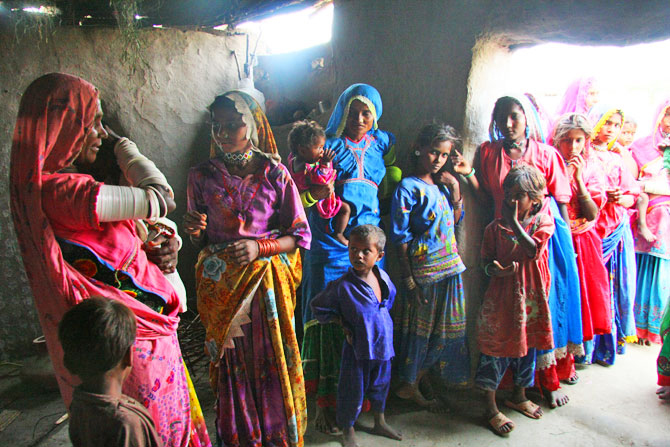Poor women often face multiple barriers such as limited access to education, healthcare, and economic opportunities. This can perpetuate a cycle of poverty that affects not only the women themselves but also their families and communities.
In many societies, women’s roles are often undervalued, leading to unequal pay, limited job prospects, and a higher risk of exploitation. Social norms and cultural practices can further restrict their rights and opportunities, making it difficult for them to break out of poverty. Empowering poor women is not only a matter of social justice but also crucial for sustainable development and economic growth. When women are given the opportunity to thrive, they can contribute positively to their families and communities, breaking the cycle of poverty for future generations.
Despite facing numerous challenges, poor women often contribute significantly to their families’ and communities’ economies through informal work, caregiving, and community support roles.
The other aspects of their relationship with society include:
- SOCIAL INEQUITIES: Poor women are disproportionately affected by social inequities such as lack of access to education, healthcare, and economic opportunities. These inequities perpetuate cycles of poverty that affect not only the women themselves but also their families and communities.
- FAMILY DYNAMICS: Poor women often play central roles in their families as caregivers, educators, and income generators. Their economic stability directly impacts the well-being of their children and households.
- COMMUNITY IMPACT: The status and well-being of poor women influence broader community dynamics, including social cohesion, community health, and resilience in times of economic hardship or crisis.
- POLICY AND ADVOCACY: Addressing the needs of poor women requires targeted policies that consider their unique challenges and vulnerabilities. Advocacy efforts often aim to amplify their voices and improve their access to resources and opportunities.
- INTERSECTIONALITY: The experiences of poor women are shaped by intersecting factors such as race, ethnicity, disability, and geographic location, which further influence their social standing and opportunities within society. Understanding and addressing the relationship between poor women and society requires a holistic approach that addresses both structural barriers and promotes inclusive development strategies aimed at achieving gender equality and social justice.
The status of a poor woman in society is often shaped by intersecting factors of gender, economic status, and social norms.
Societies can work towards creating an environment where all women, including those facing poverty, have equal opportunities to thrive and contribute to their communities’ development.
The key aspects that influence their status include:
- ECONOMIC VULNERABILITY: Poor women typically face economic hardship due to limited job opportunities, lower wages compared to men, and lack of access to financial resources such as credit and savings. This economic vulnerability can restrict their ability to meet basic needs and pursue opportunities for advancement.
- LIMITED ACCESS TO EDUCATION: Many poor women have lower levels of education, which can hinder their ability to secure stable employment and contribute to economic independence. Educational barriers often perpetuate cycles of poverty.
- HEALTH AND WELL-BEING: Poor women may have limited access to healthcare services, including reproductive health care, maternal care, and treatments for common health issues. This can impact their overall well-being and ability to participate fully in society.
- SOCIAL STIGMA AND DISCRIMINATION: Women facing poverty may experience social stigma and discrimination based on their economic status and gender. This can affect their self-esteem, social interactions, and access to opportunities.
- CAREGIVING RESPONSIBILITIES: Poor women often bear significant caregiving responsibilities within their families, including childcare, eldercare, and household management. These responsibilities can limit their ability to pursue education, work outside the home, or participate in community activities.
- LEGAL AND POLITICAL MARGINALIZATION: In some societies, poor women may face legal and political marginalization, including limited access to legal rights such as property ownership and inheritance rights. This can perpetuate their economic dependency and vulnerability.
- COMMUNITY SUPPORT AND NETWORKS: Strong community support and networks can mitigate some of the challenges faced by poor women, providing social capital, access to resources, and opportunities for mutual assistance and advocacy.Improving the status of poor women in society requires addressing these multifaceted challenges through targeted policies and programmes that promote gender equality, economic empowerment, access to education and healthcare, and legal protections. By addressing these issues, societies can create more inclusive environments where all women have the opportunity to fulfil their potential and contribute to social and economic development.
Improving the conditions of women in society, especially those facing poverty, requires a comprehensive approach that addresses various interconnected factors. Some key strategies include:
- EDUCATION: Promote access to quality education for girls and women. This includes ensuring girls enrol and stay in school, providing scholarships or financial support, and eliminating barriers such as gender stereotypes or cultural norms that discourage girls’ education.
- HEALTHCARE ACCESS: Ensure equitable access to healthcare services, including reproductive health services, maternal care, and treatments for common health issues affecting women. This can reduce health disparities and improve overall well-being.
- ECONOMIC EMPOWERMENT: Create economic opportunities for women through skills training, vocational programs, and support for women-owned businesses. This includes promoting equal pay and fair labour practices to reduce economic inequalities.
- LEGAL AND POLITICAL EMPOWERMENT: Advocate for legal reforms that protect women’s rights, including laws against gender-based violence, discrimination, and ensuring women have equal access to property rights and inheritance.
- SOCIAL SUPPORT AND SAFETY NETS: Establish social safety nets and support systems that specifically target women in poverty, such as cash transfer programs, childcare support, and access to affordable housing.
- EMPOWERMENT THROUGH TECHNOLOGY: Harness the power of technology to provide women with access to information, digital literacy, and opportunities for remote work or entrepreneurship.
- COMMUNITY ENGAGEMENT AND AWARENESS: Promote community awareness and engagement on gender equality issues through campaigns, workshops, and media outreach. Engaging men and boys as allies in promoting women’s rights is also crucial.
- LEADERSHIP AND REPRESENTATION: Support women’s leadership and participation in decision-making roles across sectors, including government, business, and civil society. This can help challenge stereotypes and advocate for policies that benefit women.
- ADDRESSING CULTURAL NORMS AND STEREOTYPES: Challenge harmful cultural norms and stereotypes that perpetuate gender inequalities. This includes promoting positive role models and narratives that empower women and girls.
- INTERNATIONAL COOPERATION AND ADVOCACY: Engage in international cooperation and advocacy to promote gender equality and support initiatives that improve the status of women globally.
By implementing these strategies in a coordinated manner, societies can work towards creating an environment where all women, including those facing poverty, have equal opportunities to thrive and contribute to their communities’ development.






















